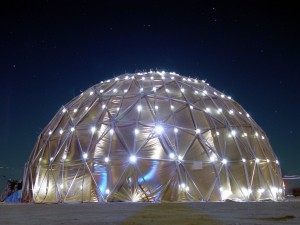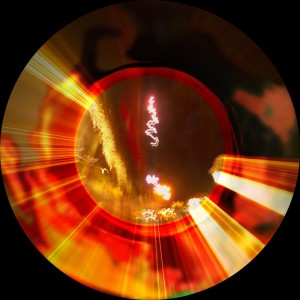The dome of the sky is one of the most influential objects on the evolution of human thought.Our species’ celestial observations have been encoded in mythologies, artworks, architecture, and sciences for millennia, subtly influencing the evolution of every aspect of human culture. However, the perceived geometry of the heavenly dome is an illusion, a result of the spherical nature of human vision.
Paraphrasing R. Buckminster Fuller, the illusion of vision is so convincing that we unknowingly project ourselves into the field. When we turn to the heavens, we are examining ourselves.
Interpretations of the heavenly cosmic order—that is to say, interpretations of our own experiences—have been embodied within domed structures worldwide. The symbolism embedded within their various manifestations reflects and reinforces the worldview of the cultures from which they emerge. They are a universal architecture, serving as a reminder of the commonality of human experience across space and time.
As interstitial environments, domes paradoxically represent the expanse of the cosmos while encapsulating a self-contained space. Mirroring visual consciousness, they provide an archetypal canvas upon which world views are symbolized. Their supernal association has made them a preferred canvas upon which experiments with illusion and perspective have been explored.
Throughout the mid 20th century, media artists Fred Waller, Morton Heilig, Doug Trumbull, Stan Vanderbeek, Roger Ferragallo and others explored projective domed environments as a means for creating group immersive environments. While many of these experiments were either never realized or have faded into obscurity, they represent pioneering visions to dissolve the boundary between audience and screen, pushing the limits of multi-sensory immersion.
Today, advancements in visual computing are facilitating a revival of domed theaters worldwide. Through the integration of networked, interactive visualization platforms and immersive display technologies, they are providing novel opportunities to explore the fuzzy boundaries between art, science, philosophy and spirituality.
Similar to the mental projections of constellatory patterns on the celestial screen of antiquity, data-driven visualizations of scientific phenomena are projected into these domed cinemas. But even as they seduce participants into simulated journeys to the micro and macro realms of existence, they are once again providing the function of their domed predecessors: spectacularly illuminating how human imagination far exceeds the spatial, temporal, and spectral limitations of our perception.
David McConville
Media artist and researcher David McConville is co-founder of The Elumenati at www.elumenati.com, a full service design and engineering firm specializing in the development of immersive projection environments. He is on the board of the Buckminster Fuller Institute helping to realize Fuller’s vision of a global network of Geoscope displays for visualizing Earth data. David is based in West Asheville, NC, USA where he is conducting independent research as a PhD candidate in the Planetary Collegium.
Read More
Watch More
Optical Nervous System from DomeFest on Vimeo.
 This work is licensed under a Creative Commons Attribution-NonCommercial-ShareAlike 2.5 Australia.
This work is licensed under a Creative Commons Attribution-NonCommercial-ShareAlike 2.5 Australia.








